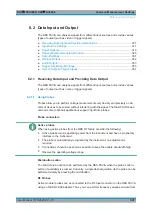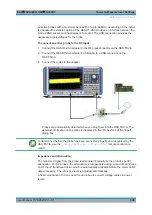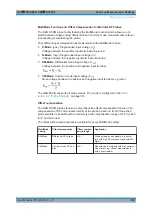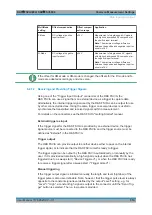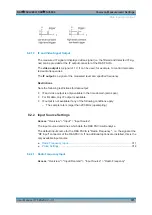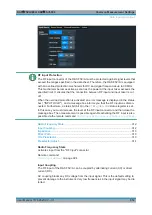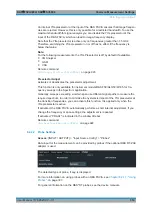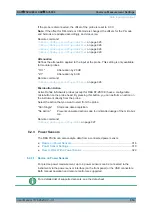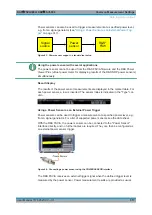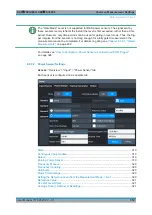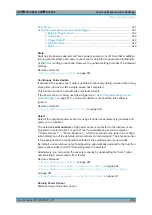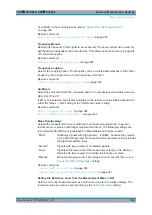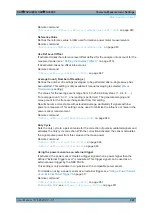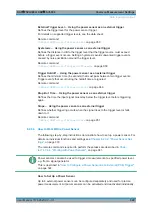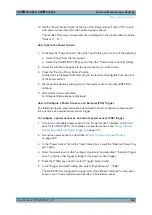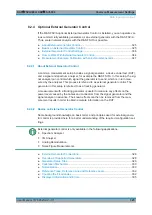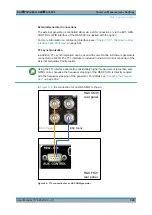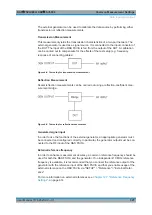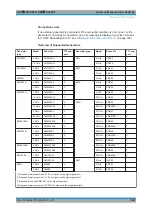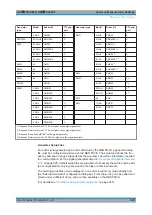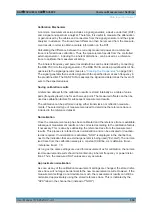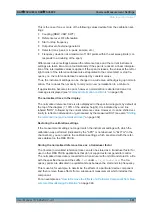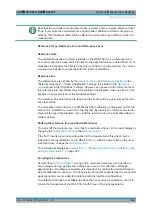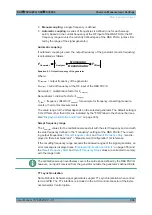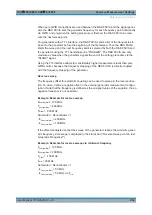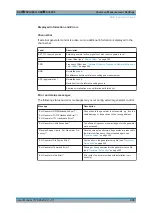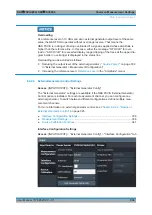
Common Measurement Settings
R&S
®
FSVA3000/ R&S
®
FSV3000
321
User Manual 1178.8520.02 ─ 01
Remote command:
CALCulate<n>:PMETer<p>:RELative[:MAGNitude]:AUTO ONCE
Reference Value
Defines the reference value in dBm used for relative power meter measurements.
Remote command:
CALCulate<n>:PMETer<p>:RELative[:MAGNitude]
Use Ref Level Offset
If activated, takes the reference level offset defined for the analyzer into account for the
measured power (see
" Shifting the Display ( Offset )"
If deactivated, takes no offset into account.
Remote command:
[SENSe:]PMETer<p>:ROFFset[:STATe]
Average Count ( Number of Readings )
Defines the number of readings (averages) to be performed after a single sweep has
been started. This setting is only available if manual averaging is selected (
The values for the average count range from 0 to 256 in binary steps (1, 2, 4, 8, …).
For average count = 0 or 1, one reading is performed. The general averaging and
sweep count for the trace are independent from this setting.
Results become more stable with extended average, particularly if signals with low
power are measured. This setting can be used to minimize the influence of noise in the
power sensor measurement.
Remote command:
[SENSe:]PMETer<p>:MTIMe:AVERage:COUNt
Duty Cycle
Sets the duty cycle to a percent value for the correction of pulse-modulated signals and
activates the duty cycle correction. With the correction activated, the sensor calculates
the signal pulse power from this value and the mean power.
Remote command:
[SENSe:]PMETer<p>:DCYCle[:STATe]
[SENSe:]PMETer<p>:DCYCle:VALue
Using the power sensor as an external trigger
If activated, the power sensor creates a trigger signal when a power higher than the
defined "External Trigger Level" is measured. This trigger signal can be used as an
external power trigger by the R&S
FSV/A.
This setting is only available in conjunction with a compatible power sensor.
For details on using a power sensor as an external trigger, see
Remote command:
[SENSe:]PMETer<p>:TRIGger[:STATe]
TRIG:SOUR PSE
, see
Data Input and Output

